Would you like to appreciate the beautiful scenery of China by hiking? Our hiking in China tour can certainly gratify you. The tour program will provide you with an unforgettable journey of physical and spiritual nourishment. It contains lots of historical sites such as the Forbidden City, Chang Tomb, and Terracotta Warriors and Horses Museum. Besides, the enchanting natural landscapes in China are available. During your China hiking tour to Yunnan, you will appreciate the fabulous scenery of Jade Dragon Snow Mountain and have a walk on the dreamy Spruce Meadow. Aside from the eye-striking mountain scenery, we will also offer you a dreamy sea view. During your Hong Kong hiking tour, you can hike to the mountain top to overlook the Pacific, smelling the fresh sea air on the peak. Then you will find it is worthy of your climb! So come on and choose us. Our hiking tour to Southwest China is the best option for you!

Glad to see you in Beijing. As a metropolitan city, Beijing enjoys a highly booming culture and economy. You will have wonderful days here. Upon your arrival, your guide will pick you up at the airport, and then you will be transferred to a hotel where the guide is ready to help you with check-in. All you need to do is get relaxed and expect the following jocund Beijing hiking tour!
Today, let us start to explore some must-go attractions in Beijing. The first scenic attraction is Tian’anmen Square built in 1417. Covering an area of 440,000 square meters, it is a place where a grand gathering of 1 million people can be held. Besides, countless political and historical events have happened here. For example, on October 1st, 1949, Chairman Mao Zedong announced the founding of the People’s Republic of China on the Tian’anmen Rostrum. In some sense, Tian’anmen Square has witnessed China’s vicissitudes from the fall of the old days to the stunning rising at present.
Next, the Forbidden City (Closed on Mondays) will be your destination. Also dubbed as the Palace Museum, it represents the most magnificent palace complex in Beijing and one of the best-preserved of wooden architecture in China and beyond. There is a moat built in 1420, which has protected the Forbidden City for over 600 years. It plays an important role not only in military defense but also in fire prevention. Besides, there are many spectacular buildings in the Forbidden City, all of which are laid out strictly along the 8,000-meter-long central axis and its sides. All the buildings can be divided into two parts. One is the outer court, where the emperor used to manage the affairs of the state, and the other is the inner court, where the royal family used to live.
After lunch, you will start your Hutong tour. A Hutong refers to a type of narrow alley that is surrounded by quadrangles. People often say the glamour of Beijing comes not only from the splendid skyscrapers but also from these ancient narrow alleys. A Hutong is often crowded with vendors who tout their foods to customers. Some sell deep-fried dough sticks and sesame-seed cakes, while others sell noodles, steamed buns, and wonton soup. You can have a taste of these traditional foods in Beijing. For your better understanding of Hutong culture, a Hutong family visit is available. You can take a rickshaw through the Hutong. The wheeler will take you to a quadrangle whose owner is ready to tell you the interesting anecdotes of Hutong.
After feeling the culture of old Beijing, you will leave for 798 Art Zone, which is considered the new cultural landmark of Beijing. Walking on the streets in the 798 Art Zone, you can see the nostalgic locomotives, the hot-air balloons in the sky, and various graffiti on the wall. The artistic atmosphere will make you leave your fast-paced life behind for peace and tranquility.

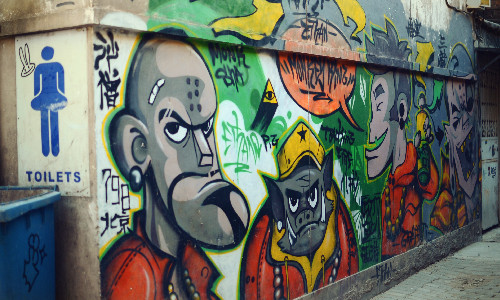
Today’s first visiting spot is Chang Tomb of the Ming Tombs, about a one-hour drive or 50 kilometers away from the Forbidden City. Covering 120,000 square meters, Chang Tomb is where the emperor Zhu Di and his wife were buried. There is a special connotation behind its name. In Chinese, "long" refers to the respect for the elders and the long sleep in the tomb without being disturbed. As an emperor who ordered to build the Forbidden City and Ming Tombs, Zhu Di naturally hoped to be respected and to peacefully rest in the tomb after his death. Chang Tomb mainly consists of Mausoleum Gate, Ling’en Gate, and Ling’en Hall. In the case of Lingen Hall, for example, although its hip roof of double eaves is only underpinned with 60 pillars made by the precious golden phoebe nanmu, Ling’en Hall remains intact after several earthquakes. This kind of pillar is hard and not perishable, so it can prevent insects from gnawing. Besides, there are not any decorations for the pillars, making the Ling’en Hall more unpretentious.
In the afternoon, you will start your Hiking on the Great Wall. Juyongguan Great Wall built in the Ming Dynasty (1368-1644) is your destination, which served as a protector of defending the northern peoples on horseback in ancient times. It is 60 kilometers away from the urban area of Beijing and a one-hour drive will be needed. As a popular saying goes, the Juyongguan section epitomizes the wonder of the Great Wall for its slopes covered with exuberant trees and blooming flowers on both sides. Therefore, it is also known as one of the Eight Famous Scenic Spots in Beijing since the Qing Dynasty (1636-1912). The width along the Juyongguan section varies greatly, with the widest part being 16.7 meters and the narrowest part being 1.2 meters. There are many magnificent defensive buildings such as watchtowers, blockhouses, garrison towns, as well as passes at a strategic location. When walking on the Juyongguan Great Wall, you can appreciate the spectacular architecture within reach. I am sure you will be deeply surprised!
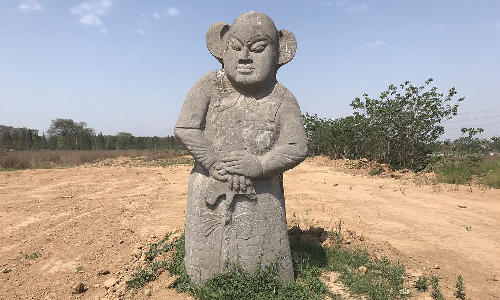

 Xi’an
Xi’an After enjoying breakfast and checking out, you will visit Xi’an by taking the estimated train G571 09:22/15:06. Covering an area of 10,108 square kilometers, Xi’an enjoys a highly colorful culture. It is not only the capital of thirteen dynasties in Chinese history but also the start point of the Silk Road. On this train, you will be offered a lunch box containing milk, fruits, sandwiches, etc. When you arrive at Xi’an Railway Station, your kind guide will take you to a hotel. You can have a good rest here.
Free time suggestion:
If you can’t wait to explore Xi’an, Grand Tang Mall can be a good destination. People often say one can have a better understanding of the Grand Tang Dynasty (618-907) if he or she pays a visit to Grand Tang Mall at night. About 8 p.m., there will be myriads of performances with rich traditional Chinese culture, such as tumbler show, muppet show, float show, and musical fountain. When you see this scene, you will feel like you are in the marketplace of the Tang Dynasty. On top of that, there are many delicious local foods, including flatbread in mutton soup, glutinous rice and date cake, and so on. You can have a taste of them!
This morning, let’s drive you northeast for about an hour to Terracotta Warriors and Horses Museum, about 40 kilometers away from the urban center of Xi’an. Famed as one of the Eight Wonders of the World, the Terracotta Warriors and Horses are not only a great legacy of the first emperor of the Qin Dynasty (221BC-207BC) but also a masterpiece of Chinese sculpture in ancient times. All of the 1.85-meter-tall warriors and 1.6-meter-tall horses are both life-size, with different eyes, noses, ears, and even eyebrows. As a matter of fact, these sculptures have been renovated by the efforts of artisans, as most of the color was lost after long years of being buried. This way, you maybe spend several seconds to admire one of the sculptures that could have taken months for the artisan to restore!
After lunch, Big Wild Goose Pagoda will be your destination. As a 64-meter-high brick-made pagoda, it was built for housing Buddhist statues and sutras that monk Xuan Zang brought from India. According to a legend, on the way back to Chang’an (now Xi’an), Xuan Zang got lost in a desert. Due to the scorching heat, his thirst was unquenchable. At that moment, a herd of wild geese was flying over his head. Seeing them, he said to the wild geese, “If you could lead me out of the desert, I will build a pagoda named Big Wild Goose Pagoda for thanking you.” Hearing what he said, the geese suddenly changed their direction. Xuan Zang followed the geese. Finally, he got back to Chang’an and made good on his promise to build this pagoda.
Next, you will visit City Wall, the best-kept ancient city wall with the largest scale in China. This 12-meter-tall wall has been standing for almost 700 years, equipped with 18 gates. Take Zhuque Gate as an example. The plinth of the gate is made of marble and its threshold is engraved with a beautiful pattern. In Chinese history, it has witnessed many great events. For instance, in 589, the gate witnessed that Emperor Wen of the Sui Dynasty (581-618) inspected troops that had won a victory in a war. The City Wall has also hosted foreign celebrities. For example, Clinton once visited the city wall. Captured by the view of the ancient city of Xi’an when standing on the city wall, he stayed on the city wall for an hour longer than planned, despite the persuasion of his staff.
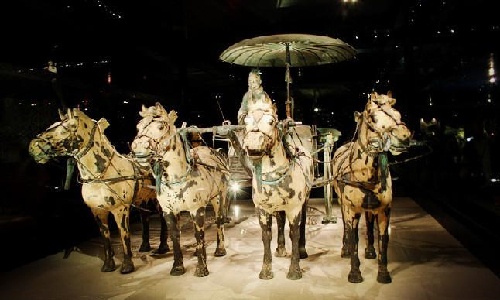
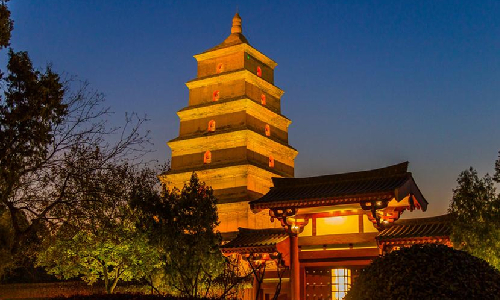
 Lijiang
Lijiang After breakfast, Muslim Quarter will be your destination. It has become a snack street since more and more Hui (an ethnic minority in China) people did catering industry in the late 1990s. There are all kinds of famous local delicacies, such as flatbread in mutton soup, Xi’an meat burger, hot and sour dumpling, steamed beef and wheat powder, pomegranate juice, and soup-filled steamed bun. Among them, flatbread in mutton soup, in particular, is the most iconic dish in Xi’an. There is a legend about its origin. In ancient times, a man who later became the emperor of the Song Dynasty (960-1279) had to return to his hometown because he was alone in a strange land after his fiancée was dead. On the way, most of the food and money that he carried were consumed, with only two pieces of big hard bread left. Due to the hunger, he came to a restaurant and ordered a mutton soup. Then he broke the bread into pieces and added them into the soup. Surprisingly, the meal was extremely delicious. As such, when he became the emperor, he named the special food flatbread in mutton soup. Since then, it has been very famous.
The next stop is Great Mosque. Built in 724, it represents the largest mosque and an important venue for Islam in Xi’an. As Arab merchants came to Chang’an through the Silk Road for business in the early Tang Dynasty, the mosque, a symbol of Islamic culture, came into being. The total area of the mosque stands at 13,000 square meters, with a construction area of 6,000 square meters. Inside the mosque stands a 9-meter-high wooden archway built in the early 17th century. Great Mosque takes on traditional Chinese architectural characteristics such as multi-tiered roofs, and various supporting posts. But the decorations inside the hall of the mosque strictly follow an Islamic style, with the pattern of arabesque. Therefore, when you enter the Great Mosque, you will be immersed in both traditional Chinese and Islamic architectural culture.
After visiting the two scenic spots, you are going to enjoy your lunch.
In the afternoon, you will leave for Lijiang by taking the Estimated Flight GS7637 15:45/18:10. Upon your arrival, your guide will pick you up at the airport. Then, you will be transferred to a hotel.

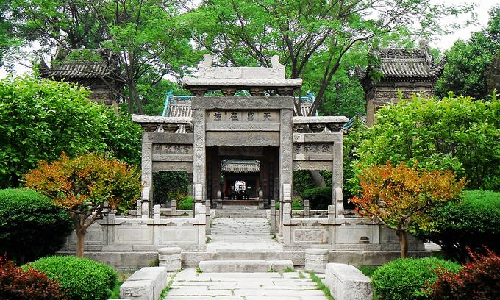
This morning, let’s start the journey in Lijiang. Jade Dragon Snow Mountain is the first destination. It is composed of 13 peaks, among which Shanzidou peak is the highest one, being at the altitude of 5,596 meters. Looked from a distance, the snowy mountain often surrounded by mists looks like a jade dragon lying in the clouds, hence its name. A geologists’ research states that the ambient area of the Jade Dragon Snow Mountain used to be an ocean and it was the crustal movement that created these different striking landscapes. Therefore, it is a famous spot for sightseeing, hiking, skiing, and scientific research. Besides, Jade Dragon Snow Mountain is full of legends. According to a legend, it is the incarnation of the “Sanduo”, the protector of the Naxi people.
Next, you will start the hiking tour on snow mountain. Moving up from the mountain foot by cable car, you can see Spruce Meadow on the Jade Dragon Snow Mountain. It is the grassland with a titanic spruce forest, where you can have a walk and enjoy the dreamy scenery. An archaic legend about this mysterious and engaging Spruce Meadow goes like this: A long time ago, a Naxi man and a Naxi woman fell in love with each other. The man promised that he would marry her as his wife because she was the only one with who he wanted to share the rest of his life. Later, their eldership knew the thing. Their elders broke them up without any hesitation due to the feudal plural marriage in which a man is supposed to have more than one wife. Therefore, for pure love and to escape from an arranged marriage, the two Naxi lovers decided to die for love in Spruce Meadow.
Move down from the mountain top and you can see Blue Moon Valley. As its name suggests, it enjoys worldwide fame for its blue lake and the crescent-shaped valley full of exuberant trees. On a sunny day, hearing the tweet of cute birds living in the picturesque valleys, watching the gurgling streams flowing, feeling the gentle breeze blowing, and smelling the fragrance of the beautiful flowers by the azure lake, you will feel like being in a fairyland. All you need to do is enjoy the enchanting scenery.
After lunch, Baisha Mural Paintings in the Baisha Village is the next visiting spot to be visited. Most of them were created from the early Ming Dynasty to the early Qing Dynasty. The mural is considered to be a product of the openness of Naxi society, which at that time was economically prosperous, with frequent cultural exchanges and religious prosperity. The painters came from different social groups, such as the local Naxi painters, the Taoist painters, the Buddhist painters, and the Lama painters. As such, the various religious culture and the art forms of Buddhism, Lamaism, and Taoism can be found through the figures of the murals. Differing from the other frescos, every Baisha mural painting includes at least one hundred various lifelike portraits containing Buddhas, criminals, bureaucrats, and so on. All the portraits with smooth lines and bright colors are so vivid that you will marvel at them!
After that, you will be driven to Shuhe Ancient Town. At the foot of a hill and near a river, the town used to be a settlement of the Naxi people, with the style of a town in the south of the Yangtze River. Besides, it teems with the unique ethnic characteristics of the Southwest Plateau. In the town, there is a bridge called Qinglong Bridge erected in the Ming Dynasty. It was designed by the Chieftain Mu in Lijiang and served as a landmark at that time. Being 25 meters in length, 4.5 meters in width, and 4 meters in height, the bridge built with stones tops the ancient stone bridges in Lijiang. In some sense, that means that Shuhe Ancient Town has been critical to the economic and cultural mix of Lijiang. After hundreds of years of wind and rain washing, the deck of the Qinglong Bridge has become mottled, but without losing its solemnity. Standing here, you may hear the horses' hooves beating on the streets.


 Kunming
Kunming This morning, you will be transferred to railway station to take the estimated train D3942 09:15/12:58 to Kunming. Upon arrival, your guide will take you to have lunch.
After that, you will start to explore some attractions in Kunming. Green Lake Park is the first destination. As the lake is characterized by its weeping willows nearby and lucid water, hence its name. Crowned as an emerald in Kunming, it is where administrative officials in Yunnan used to build pavilions since the Ming Dynasty. In winter, thousands of black-headed gulls from the north will overwinter in the Green Lake Park as Kunming enjoys a climate that feels like it is always spring. Kunming people regard gulls as their friends and love them very much. Every winter, thousands of people throw food to feed these gulls, which becomes a major landscape in Kunming. Gradually, visiting Green Lake to watch seagulls becomes a great pleasure for Kunming people and many foreign tourists.
The next stop is Yuantong Temple. With a history of more than 1,200 years, it is the largest temple in Kunming. The temple consists of the Buddha Halls of three sects. They are Mahayana Buddhism, Theravada Buddhism, and Tibetan Buddhism, with an emphasis on Mahayana Buddhism. Inside the temple stands Theravada Buddhist Hall, which is unique in China. The bronze-made statue of Sakyamuni in the main hall (3.5 meters high and 4 tons in weight) is different from the statue of Sakyamuni in the Yuantong Palace in shape, showing the difference between the two major schools of Buddhism. Since ancient times, Yuantong Temple’s majestic Buddha statues, unique pavilions, rugged rocks, and verdant trees have attracted countless literati who have written a lot of poems praising the temple.
Today’s last visiting spot is Flowers and Birds Market. As the best representing the normal life of Kunming city, the market is full of a dazzling array of flowers, birds, antiques, jewelry, and handicrafts. In the market, what you see is the ancient house and what you hear is the authentic Kunming dialect as well as the tweet of cute birds. Besides, many food stalls are selling special delicacies such as rice noodles, rice-flour cake, and sticky cakes along the street. In a word, no matter what your cultural background and aesthetic taste are, you can find something you like here.
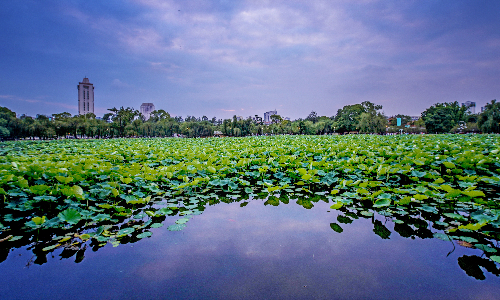
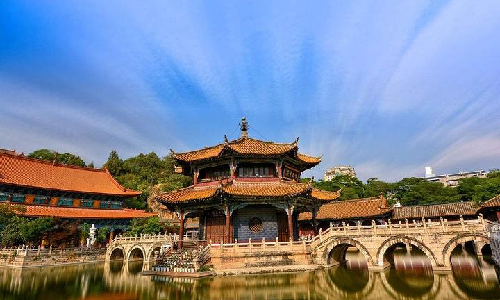
 Guilin
Guilin After breakfast, you will take the estimated flight MU7857 09:05/10:35 to Guilin, the capital of China’s Guangxi Province. When you arrive, your guide will pick you up at the airport. Then you will be driven to a restaurant for lunch.
The first scenic spot in Guilin is Elephant Trunk Hill. It is about 180 meters long and 200 meters high above sea level. As its name tells, the hill resembles an elephant standing by the Li River with its trunk stretching to the river water. As the symbol of the Guilin landscape, Elephant Trunk Hill is full of legends. One legend goes like this: During the war years, people in a village around the Li River and an elephant were good friends. In a war, the elephant was injured and almost died for the safety of people. Looking at the elephant in pain, the surviving villagers went out of their way to find a medicine that could cure their friend. Luckily, the elephant recovered. But a few days later, a monster living in the Li River started to make waves, making the village flooded. To protect the villagers, the elephant jumped into the water and fought with the monster. The result was that the monster was chased away. In a bid to prevent the monster from returning and protect the local people, the elephant became a hill to suppress the monster. That is how the hill got its name.
Next, Reed Flute Cave is your destination. Legend has it that reed grass grew at the entrance of the cave and could be made into a flute and make a pleasant sound. That is how the cave is named. Reed Flute Cave is characterized by a dazzling array of stalagmites, stone pillars, stone flowers, and stone curtains. Scientific research tells that these various stalactites are formed by the groundwater that dissolves the calcium carbonate of the rock. All landscapes in the cave are masterpieces of nature without any artificial modifications. This way, Reed Flute Rock is crowned as the "Art Palace of Nature". Aside from its beautiful scenery, the cave has a profound cultural heritage. There are more than 70 murals found in the cave.
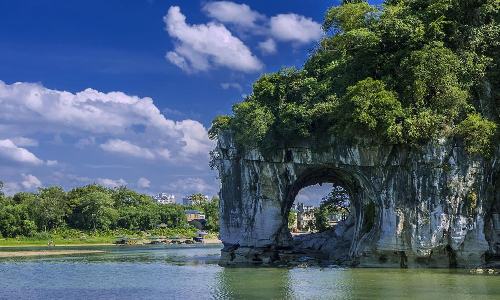
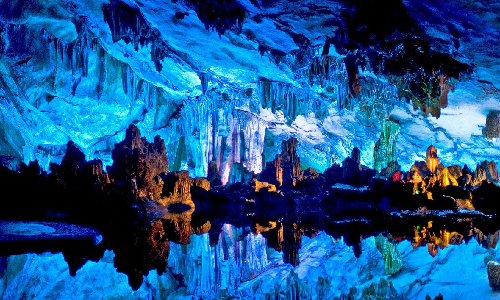
 Longsheng
Longsheng This morning, let’s drive you northwest for about 1.5 hours to Ping’an Village to visit Longji Rice Terraces, about 75 kilometers away from the urban center in Guilin. The terraces are at an altitude between 300 and 1,100 meters, with a maximum slope of 50 degrees. Longji Rice Terraces, the most renowned terraces in China, enjoy an engaging landscape and are endowed with colorful folk customs.
The shape of the terrace is dominated by curves, which are like ribbons falling from the sky. Besides, these “ribbons” have different colors in different seasons. In spring, the terraces irrigated are like a silvery mirror; in summer, the crops in the terraces become exuberant, which makes the green “ribbons”; in autumn, the “ribbons” become golden as crops ripen; in winter, with snow covering the terraces, the “ribbons” turn white. Aside from its various magnificent scenes in four seasons, Longji Rice Terraces has two unique landscapes. They are “Seven Stars with Moon” and “Nine Dragons and Five Tigers”. “Nine Dragons” refer to the nine small mountain beams separated by the Longji Mountain, and “Five Tigers” means the five low hills. The scenery, “Seven Stars with Moon” signifies seven small hills accompanying the shiny silver paddy field on the top of the mountain. When looked at from a distance, the scene is like seven twinkling stars accompanying a bright moon. What an engaging picture scroll it is!
When today’s tour ends, you will go back to Ping’an Village to spend the night.
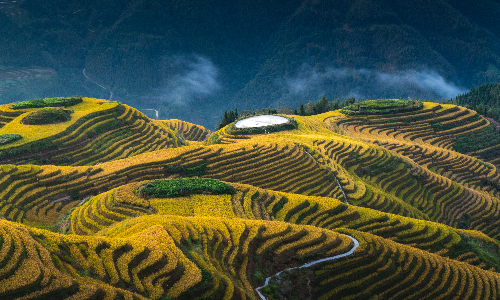
 Guilin
Guilin After enjoying breakfast, you will spend about two hours hiking to Zhonglu Village. Along the way, you will pass by a reservoir. Then, Jinkeng Da Village will be your destination, which takes you about two hours’ walk. Here, you can see the majestic Jinkeng Terraces surrounded by clouds and mountains, resembling a natural sinkhole. Looked from a distance, the terraced fields are like stairs to the sky. They also seem layers of scales, decorating the long and steep Longji Mountain into a lively dragon. There are many lucid streams on the mountains covered with vegetation. All the houses in the Yao (an ethnic minority) village are turrets, which adds charm to the Jinkeng terraces. You can have a back-to-nature sense!
After that, let’s drive you south for about half and two hours back to Guilin, about 100 kilometers away from Jinkeng Da Village.
 Yangshuo
Yangshuo Guilin
Guilin This morning, you will be transferred southeast for about 42 minutes to Mopanshan Pier by car, around 24 kilometers away from the urban center of Guilin. At the pier, you will take the three-star Li River Cruise to Yangshuo. During a four hours’ journey, you can enjoy lunch on the cruise. Besides, the enchanting scenery of the Li River is accessible. People often say that Guilin landscapes are the best in China. Actually, it is Li River that boasts the best scenery in Guilin. Characterized by its lucid waters, Li River, resembling a jade bond, is surrounded by green mountains with exceptional caves and ancient villages. On the way to Yangshuo, you can see buffaloes plowing the fields and farmers carrying a basket doing agricultural work. That is the pleasant bucolic scene on the banks of the Li River.
When arriving at Yangshuo, you will go to Yangshuo West Street. Located in the center of Yangshuo, it has been over 1,400 years old, with a length of 800 meters and a width of 8 meters. The street has welcomed lots of celebrities in China and beyond. For example, over 150 state leaders once paid a visit here. The buildings along West Street are ancient houses built from 60 to 70 years ago, some of which date back to the Ming and Qing Dynasties. There are many handicraft shops, calligraphy shops, cafes, bars, and Chinese Kungfu schools. Walking on the street, you can find the vendors who sell various fresh fruits or local snacks can speak English. That makes this old street more international.
After that, let’s take you north back to Guilin, 70 kilometers from Yangshuo West Street, about an hour and a half drive.
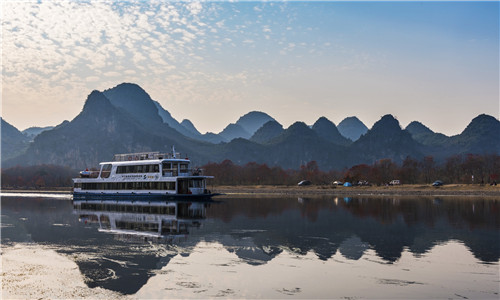
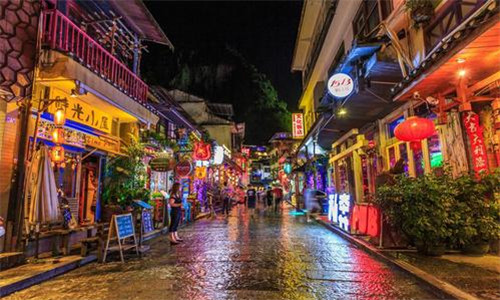
 Hong Kong
Hong Kong Today, you will leave for Hong Kong by flight. As a Special Administrative Region in China, Hong Kong, a flourishing metropolis enjoying worldwide fame, is home to over 7 million people. Upon your arrival, your guide will pick you up at the airport. Then you will be transferred to a hotel for rest.
The first destination in Hong Kong today is Wong Tai Sin. With a history of 100 years, it is said to be a temple where the wishes of the prayers are granted. As such, the temple is crowded with hordes of people especially on the first day of January in the lunar calendar. The temple is dedicated to Wong Tai Sin, the Taoist immortal of the Eastern Jin Dynasty (317-420). It also enshrines the sages of Confucianism and Buddhism such as Confucius and Guanyin (Buddhist counterpart of the Virgin Mary). Its magnificent Main Hall is equipped with a stele carved with the inscription, which tells how Wong Tai Sin became immortal.
Then, you will take the Peak Tram to Victoria Peak, which includes many must-go attractions. You will take a Peak Tram to the top of sVictoria Peak. On the way up to the peak, you will find tall buildings and trees leaning to one side. It is very exciting! When you arrive at Victoria Peak, you will go to Peak Tower, which is located at an altitude of 396 meters. It is a fabulous attraction with a fusion of entertainment, sightseeing, and dining. On the top floor of the Peak Tower is a viewing platform named Sky Terrace 428, with an altitude of 428 meters. It is considered the best place for visitors to have a panoramic view of Victoria Harbor. When you look out by the window, you will marvel at the stunning scenery!
The scenic spot to be visited in the afternoon is Repulse Bay. Surrounded by mountains and sea, the crescent-shaped bay is characterized by clear water and soft sands. Besides, it is warm in winter and cold in summer, with water temperatures between 60.8 and 80.6 degrees Fahrenheit. You can lie on the bay, be bathed in the sunshine, and appreciating the view over the sea. There are also many villas and mansions scattered on the slopes of the bay, one of which belongs to the richest tycoon in Hong Kong, Li Ka-Shing.
In the Repulse Bay stands Tin Hau Temple. Built in the early Qing Dynasty, the temple is considered to protect the people fishing on the sea from stormy weather. About its origin, there is a story. Once upon a time, a red censer was washed into the Causeway Bay. The local villagers and fishermen believed that it was Tin Hau who made it. Therefore, a small temple dedicated to Tin Hau was built there and incense was burned in the censer. That is how the temple got the name.
After that, let’s drive you to Stanley Market. Here, the sun is shining and the breeze is cool. Besides, there are many shops selling souvenirs for visitors, including Chinese handicrafts, souvenir T-shirts, oil paintings, etc. Free time is offered for you to pick out something you like.
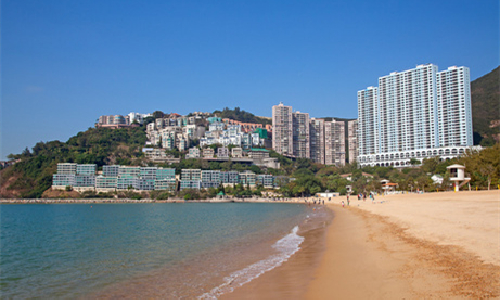

This morning, let’s drive you southeast for about 25 minutes to Shek O, about 25 kilometers away from urban Hong Kong. That means that Hong Kong Hiking Tour starts. Uphill from To Tei Wan and downhill from Big Wave Bay Beach, you will spend about three hours in the 8-kilometer trekking route. Along the way, many signposts indicate the right path for you to follow. So you need not worry about getting lost. When on the peak, you can overlook the engaging sea view and take photos of the azure sea. It is fantastic! If you feel tired, you can lie on the beach, enjoying the sunshine and smelling the fresh sea air.
After that, you will be transferred to the hotel for rest.
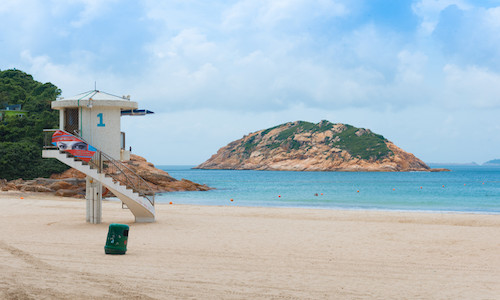

The 16-day China tour comes to an end. After enjoying breakfast, your guide will take you to the airport. Bye.
Author: Xie Peng
Proofreader: Lexie
| City | Five Star hotel list | Four Star hotel list |
|---|---|---|
| Beijing | Sunworld Dynasty Hotel Beijing Wangfujing | Sunworld Hotel Wangfujing |
| Xi'an | Tianyu Gloria Grand Hotel Xi'an | Sunworld Dynasty Hotel |
| Lijiang | Wonderport International Hotel | Lijiang Wangfu Hotel |
| Kunming | Grand Park Kunming | UChoice Hotel |
| Guilin | Lijiang Waterfall Hotel | Guilin Bravo Hotel |
| Longsheng | Longji Holiday Hotel | Baike Boutique Hotel |
| HongKong | Harbour Grand Kowloon | Harbour Plaza North Point Hotel |
 |
![]() About your child or infant, please contact us for a discounted price.
About your child or infant, please contact us for a discounted price.



We started with a few days in Beijing & ended in Shanghai, from where we visited the Forbidden City and Great Wall. In between we visited Terra Cotta Warriors Museum, Panda Base, Shanghai Disneyland.

We had a wonderful holiday in China which will remain long in the memory. China is a breathtakingly beautiful country full of splendid temples and palaces, mountains and rivers, peaceful rural scenes and bustling shopping streets.
 QUICK ENQUIRY
QUICK ENQUIRY